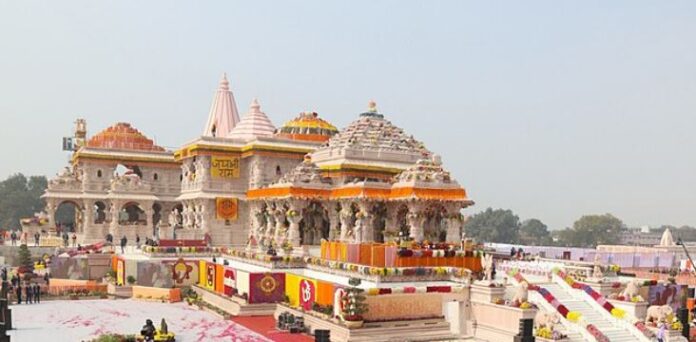
Shri Ram Janmbhoomi Mandir Ayodhya – Jai Shri Ram! (shrirammandirayodhya.com)
Ayodhya is a city in the northern Indian state of Uttar Pradesh and holds great significance in Hinduism. Here are some key aspects of Ayodhya’s importance:
- Ram Janmabhoomi: Ayodhya is traditionally believed to be the birthplace of Lord Rama, a major deity in Hinduism. The Ram Janmabhoomi, the supposed birthplace of Lord Rama, has been a focal point of religious and cultural sentiments for Hindus.
- Ramayana: Ayodhya is a prominent setting in the ancient Indian epic, the Ramayana. The city is described as the capital of the ancient Kosala Kingdom, ruled by King Dasharatha, the father of Lord Rama.
- Ram Mandir: The Babri Masjid, which stood at the Ram Janmabhoomi site in Ayodhya, became a source of religious and political controversy. In 1992, the mosque was demolished, leading to a prolonged legal battle. In 2020, the Supreme Court of India ruled in favor of the construction of a Ram Mandir (temple) at the site.
- Religious Pilgrimage: Ayodhya is an important pilgrimage site for Hindus, drawing devotees from across India and the world. Pilgrims visit the city to seek blessings and connect with the spiritual heritage associated with Lord Rama.
- Festivals: Ayodhya is particularly significant during the festival of Diwali, which celebrates Lord Rama’s return to Ayodhya after defeating the demon king Ravana. The city is illuminated with lights and diyas during this festival.
- Cultural Heritage: Ayodhya has a rich cultural heritage, with numerous temples, ghats, and historical sites. The city reflects the historical and religious legacy of Hinduism.
- Hanuman Garhi: A temple dedicated to Lord Hanuman, Hanuman Garhi is one of the prominent religious sites in Ayodhya. It is believed that Lord Hanuman resided at this spot to guard the city.
- Saryu River: The Saryu River flows through Ayodhya, and bathing in its waters is considered auspicious by Hindus. The river is also associated with various mythological events.
While Ayodhya is primarily known for its significance in Hinduism, it is also a place of historical and cultural importance for people of various beliefs. The city’s diverse heritage continues to attract scholars, historians, and spiritual seekers.
Stay in Ayodhya Hotel Ramayana (theramayana.in)
Ayodhya is well-connected by various modes of transportation, making it accessible for visitors. Here are the common ways to reach Ayodhya:
- By Air:
- The nearest airport to Ayodhya is the Ayodhya Airport (FAA code: AYD). However, this airport has limited commercial flights. The nearest major airport with better connectivity is the Chaudhary Charan Singh International Airport (LKO) in Lucknow, which is approximately 140 kilometers away from Ayodhya.
- From Lucknow Airport, you can hire a taxi or take a bus to Ayodhya.
- By Train:
- Ayodhya has its own railway station called Ayodhya Junction (AY), which is well-connected to major cities in India.
- The rail network offers several options for trains connecting Ayodhya to cities like Delhi, Lucknow, Varanasi, Kolkata, and others.
- By Road:
- Ayodhya is well-connected by road to various cities and towns in Uttar Pradesh and neighboring states.
- State-run buses, private buses, and taxis operate between Ayodhya and major nearby cities. The road network is well-maintained, and you can reach Ayodhya by car or bus.
- By Car:
- Ayodhya is well-connected by roads, and you can drive to the city. The journey may take a few hours, depending on your starting point.
- The city is easily accessible from major cities like Lucknow, Varanasi, and Gorakhpur via National Highways.
- By Bus:
- State-run and private buses connect Ayodhya to various cities in Uttar Pradesh and neighboring states. There are regular bus services to and from Ayodhya.
- You can check with the local bus terminals or online booking platforms for schedules and availability.











